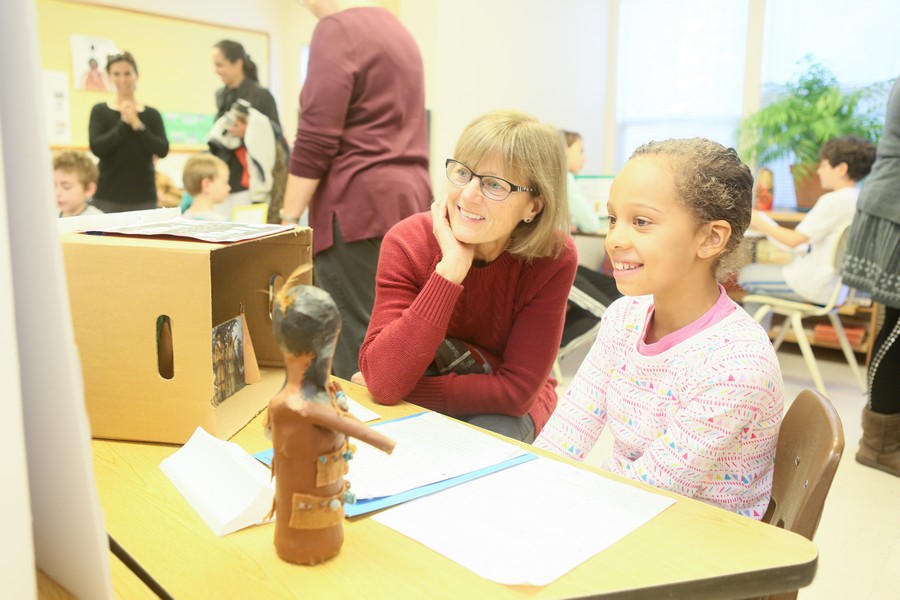 ‘ It does not require many words to speak the truth .’
‘ It does not require many words to speak the truth .’This statement, attributed to Native American elder, In-mut-too-yah-lat-lat [Thunder Rolling Down the Mountain] or Chief Joseph, was chosen by third grader Luc Mattern to include in his Moral Hero study of the historic Nez Perce leader.
On a recent afternoon Mattern and the third grade class shared what they had learned. They transformed their classroom into a ‘living museum’ and presented to visiting parents, guests and elementary students about their chosen heroes, through written reports, poetry and timelines of notable events in each hero’s life.
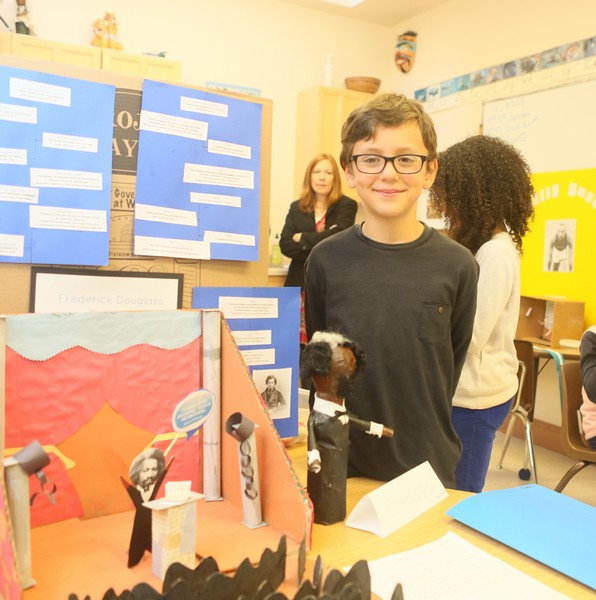 Isabelle Montagne enjoyed reading her original poem about President Abraham Lincoln (excerpted below) aloud to the attentive adults and kids who sat next to her:
Isabelle Montagne enjoyed reading her original poem about President Abraham Lincoln (excerpted below) aloud to the attentive adults and kids who sat next to her: Abraham Lincoln.
Who believed all men should be free
and the states should all be united
Who said “All that I am or ever hope to be
I owe to my angel mother.”
Many students chose to include posters, dioramas, support props. Some even costumed themselves as a living representation of their hero! Each student also made a colorful hero bottle doll.
‘There was just something about wrapping Clara Barton in her Red Cross apron, for example, or fitting Marie Curie with lab goggles — all just the right size for the dolls, that brought the characters more to life for each child,’ commented their teacher, Hamsa Heinrich. ‘Each student admired and felt close to his or her hero.’
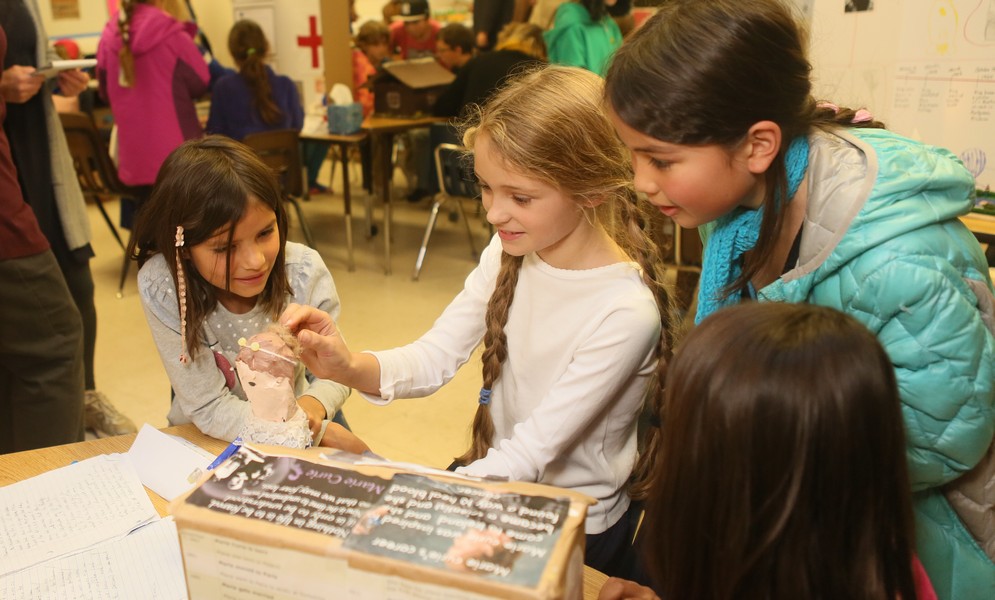 Poetry played a creative role in the project, nurturing students’ literary aspirations and serving to guide their distillation of information about their subjects.
Poetry played a creative role in the project, nurturing students’ literary aspirations and serving to guide their distillation of information about their subjects.‘As third grade students become more comfortable writers, it seems like there is a common tendency to write more than is needed,’ shared Heinrich. ‘One of the harder things for students to do, then, especially with a project where they have gathered so much information, is to synthesize it into a few main ideas. I’ve found that giving them a poetry format to follow as a guide can be a great way to for them to identify and pull out key facts and interesting details.’
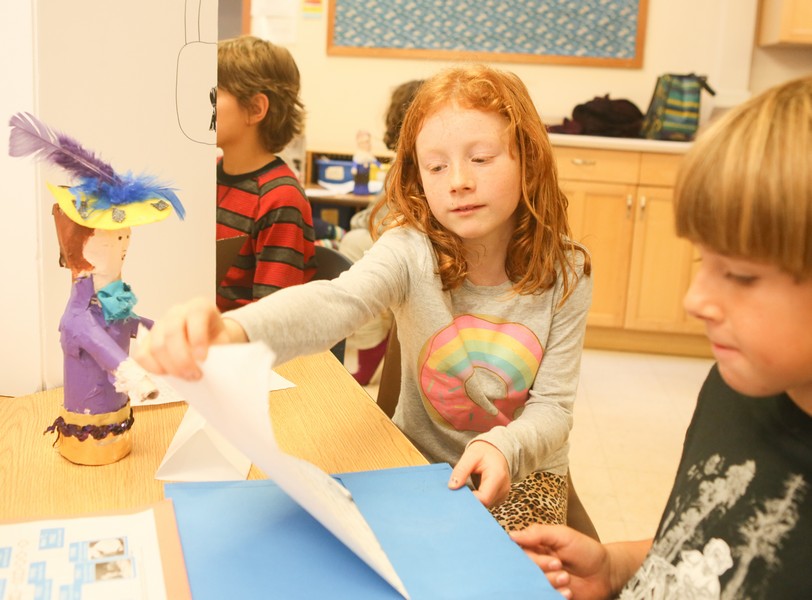 Third grader Colby Culbertson, who chose Sioux chief Sitting Bull as his moral hero, also enjoyed sharing his poem (excerpted):
Third grader Colby Culbertson, who chose Sioux chief Sitting Bull as his moral hero, also enjoyed sharing his poem (excerpted): Sitting Bull.
Who said “Nothing is so strong as gentleness;
Nothing is so gentle as real strength.”
Who believed in the Great Spirit
Who used weapons and words
Who gave hope, inspiration and courage
Students this year were inspired to choose as moral heroes an array of mostly historical figures, including civil rights activists, athletes, conservationists, scientists, politicians and medical professionals.
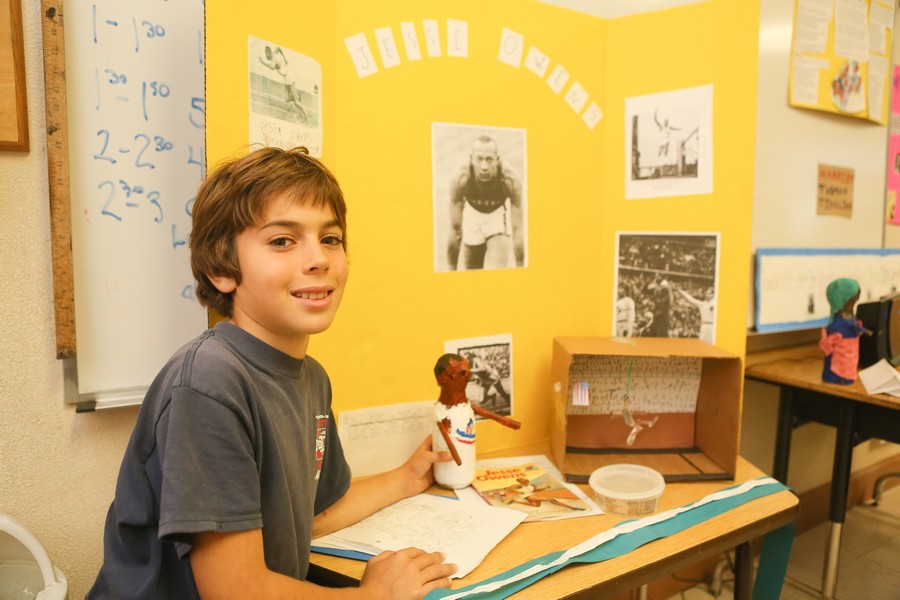 ‘I picked John Muir as my moral hero because he had a cool beard and loved nature,’ said Nash Wilson.
‘I picked John Muir as my moral hero because he had a cool beard and loved nature,’ said Nash Wilson. ‘I studied Rosa Parks,’ shared classmate Cavan Smith. ‘She fought for civil rights and worked with Martin Luther King, Jr. who organized a bus boycott that lasted for more than a year! She helped buses, schools and churches to be fair to everyone and I’m very happy that the laws changed!’
Heinrich explained that in third grade students are ready to expand their research and writing skills, and that one of the ways she supports this academic readiness is through the classic assignment of having students read and study biographies.
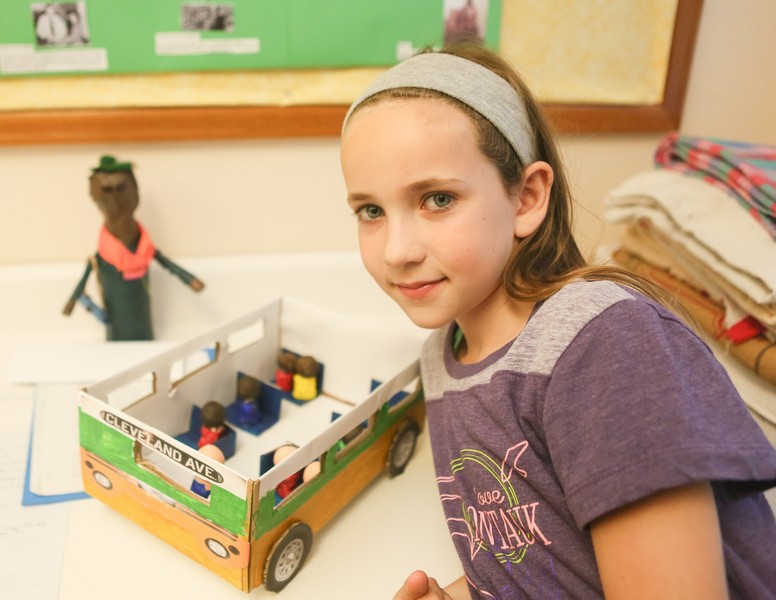 ‘Third graders are stretching to read longer books and are learning strategies to be independent note takers,’ said Heinrich. ‘Besides these necessary skills, people are a fascinating subject, and the children are always pleasantly surprised at the richness of reading about real-life stories. The old adage that ‘facts are stranger than fiction’ is astoundingly true! There are also many terrific biographies published at just the right reading level for this age group. These are all good reasons why biographies have long been a favorite part of my curriculum.’
‘Third graders are stretching to read longer books and are learning strategies to be independent note takers,’ said Heinrich. ‘Besides these necessary skills, people are a fascinating subject, and the children are always pleasantly surprised at the richness of reading about real-life stories. The old adage that ‘facts are stranger than fiction’ is astoundingly true! There are also many terrific biographies published at just the right reading level for this age group. These are all good reasons why biographies have long been a favorite part of my curriculum.’ ‘I wanted to learn about Sojourner Truth because I thought she had a really unusual name and I read a little bit about her and her life seemed really different and interesting,’ shared third grader Olivia Long. ‘She was born a slave and her given name was Isabella. She chose the name ‘Sojourner Truth’ for herself in 1843 and later became an abolitionist and also worked for women’s rights.’
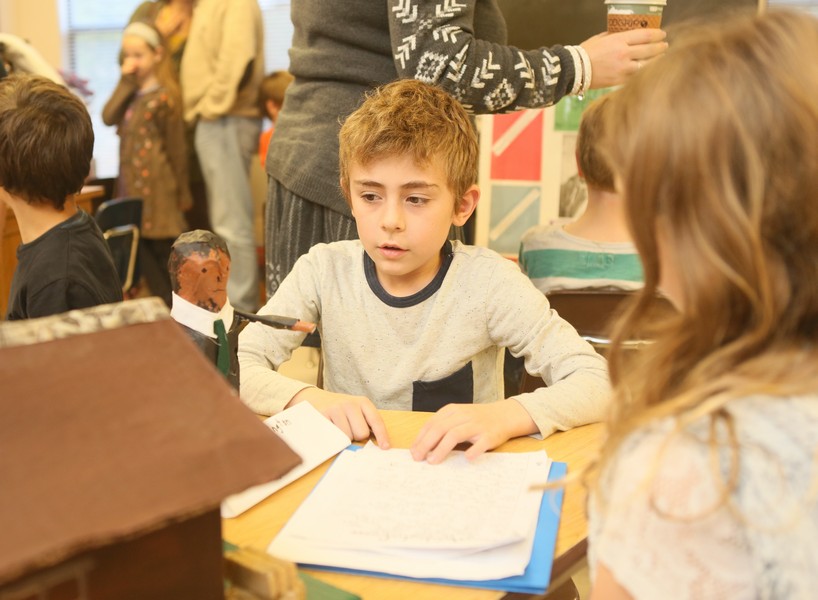 Student Shirin Rhodes chose her moral hero, Sacajawea, because she wanted to study a Native American woman. She learned that Sacajawea, a member of the Shoshone tribe, was kidnapped as a child and taken far from her family and Idaho homeland. She spent about a year in a Hidatsa Sioux village in North Dakota, and then was sold to French trapper, Toussaint Charbonneau, as a ‘wife.’ Sacajawea was the only woman to accompany the Lewis and Clark and the Corps of Discovery on their westward exploration where she was valued as an interpreter.
Student Shirin Rhodes chose her moral hero, Sacajawea, because she wanted to study a Native American woman. She learned that Sacajawea, a member of the Shoshone tribe, was kidnapped as a child and taken far from her family and Idaho homeland. She spent about a year in a Hidatsa Sioux village in North Dakota, and then was sold to French trapper, Toussaint Charbonneau, as a ‘wife.’ Sacajawea was the only woman to accompany the Lewis and Clark and the Corps of Discovery on their westward exploration where she was valued as an interpreter.Heinrich explained that the project, and specifically the timeline aspect, help students by eliminating some of the abstractness they can encounter in understanding history.
 ‘Timelines help make historical events and sequences more concrete and understandable. And above and beyond this, I want students to know that there are such positive people in the world doing good work. It’s inspiring that you can be a ‘regular person’ like Rosa Parks or Jesse Owens — and choose to not sit in a designated seat on a bus or to compete in the Olympics despite the palpable racism, and make a tangible difference in the lives of so many.’
‘Timelines help make historical events and sequences more concrete and understandable. And above and beyond this, I want students to know that there are such positive people in the world doing good work. It’s inspiring that you can be a ‘regular person’ like Rosa Parks or Jesse Owens — and choose to not sit in a designated seat on a bus or to compete in the Olympics despite the palpable racism, and make a tangible difference in the lives of so many.’####
Contact: Leigh Ann Clifton, Director of Marketing & Communications,
Nestled among the redwoods on 355 mountaintop acres, Mount Madonna is a safe and nurturing college-preparatory school that supports students in becoming caring, self-aware and articulate critical thinkers, who are prepared to meet challenges with perseverance, creativity and integrity. The CAIS and WASC accredited program emphasizes academic excellence, creative self-expression and positive character development. Located on Summit Road between Gilroy and Watsonville.
